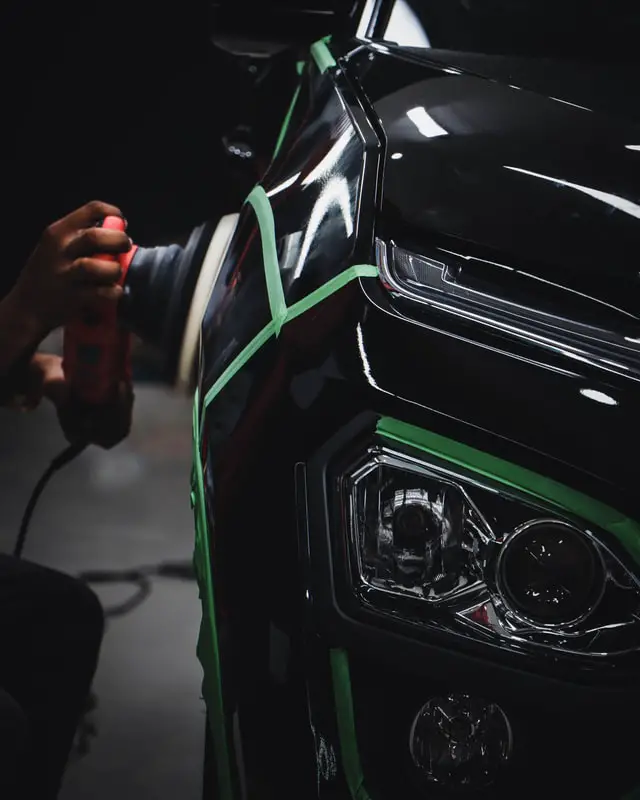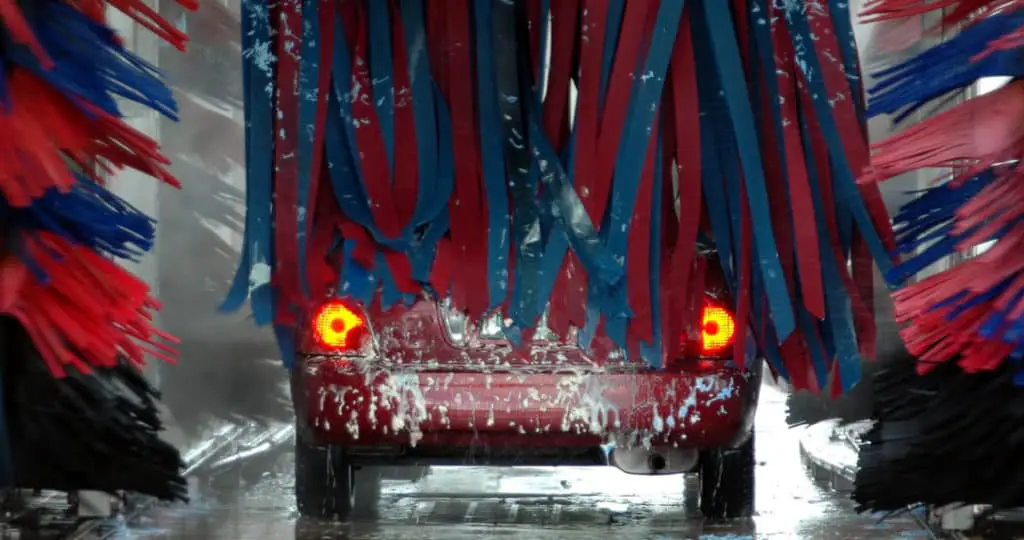Last Updated on February 28, 2025 by Nate Schnell
Ceramic coatings offer an excellent way to protect your car’s paint, keeping it glossy, water-repellent, and resistant to contaminants. However, there may come a time when you need to remove it—whether due to improper application, damage, or simply wanting to apply a fresh coat. Removing ceramic coating requires precision, patience, and the right tools to avoid damaging your vehicle’s paintwork.
This guide will walk you through why you might need to remove ceramic coating, the best methods to do it effectively, and whether you should attempt it yourself or hire a professional.
Why Remove a Ceramic Coating?
Ceramic coatings are designed to last for years, but certain situations may require their removal:
- Improper Application: If the coating was applied unevenly, leaving high spots or streaks, removal may be necessary before reapplying it correctly.
- Aging or Worn-Out Coating: Over time, ceramic coatings degrade, losing their hydrophobic properties and visual appeal.
- Damage from Contaminants: Harsh chemicals, incorrect washing techniques, or environmental exposure can compromise the coating’s effectiveness.
- Desire for a Fresh Start: Some vehicle owners prefer to remove an old coating before reapplying a new one for maximum effectiveness.
Preparing Your Car for Ceramic Coating Removal
Proper preparation ensures the removal process is smooth and prevents potential damage to your paint.
Materials Needed:
- Car wash soap
- Wash mitt or sponge
- Microfiber towels
- Clay bar or clay mitt
- Iron remover (optional)
- Tar remover (optional)
- Paint cleaner or polish (optional)
Step 1: Wash the Car Thoroughly
Start by washing your car with a high-quality car wash soap to remove dirt, grime, and surface contaminants. Pay special attention to areas that accumulate the most debris, such as lower panels and wheel wells.
Step 2: Inspect the Surface
Examine your vehicle for stubborn contaminants like tar, bug splatters, or iron particles. If necessary, use an iron remover or tar remover to lift these contaminants before proceeding.
Step 3: Clay Bar Treatment
A clay bar or clay mitt will help remove any remaining surface contaminants and prepare the paint for the next steps. Use a clay lubricant and glide the bar across the paint with light pressure.
Step 4 (Optional): Perform Paint Correction
If your car’s paint has swirl marks or scratches, consider using a paint cleaner or polish to restore its clarity. This step is especially useful before reapplying a new ceramic coating.
Step 5: Dry the Car
Use microfiber towels to ensure the car is completely dry before moving on to the removal process.
Methods for Removing Ceramic Coating
There are three primary methods for removing ceramic coating: chemical, manual (clay bar), and mechanical (polishing with a buffer). The best method depends on how strongly bonded the coating is to your vehicle’s surface.
Method 1: Isopropyl Alcohol (Chemical Removal)
This method is suitable for ceramic coatings that are beginning to wear down but are still present.
Materials Needed:
- Isopropyl alcohol (IPA)
- Microfiber towels
- Clay bar or clay mitt (if needed)
- Wax or sealant (optional)
Steps:
- Ensure the surface is clean and dry.
- Pour some isopropyl alcohol onto a microfiber towel.
- Gently rub the affected areas in small sections to break down the ceramic coating.
- Use a clean microfiber towel to wipe away the coating residue.
- Inspect the surface and repeat if necessary.
Note: This method may not fully remove hardened coatings but works well on deteriorating ceramic layers.
Method 2: Clay Bar (Manual Removal)
Clay barring is a slightly more aggressive method but still safe if done correctly.
Materials Needed:
- Clay bar or clay mitt
- Clay lubricant or soapy water
- Microfiber towels
- Wax or sealant (optional)
Steps:
- Lubricate the surface with a detailing spray or soapy water.
- Glide the clay bar or mitt over the paint using light pressure.
- Continue until you feel the surface becoming smoother.
- Wipe off residue with a clean microfiber towel.
- Inspect and repeat if necessary.
Pro Tip: Clay barring removes only the outermost layer of the coating, so if the coating is still strongly bonded, you may need to follow up with a polishing method.
Method 3: Orbital Buffer (Mechanical Removal)
For ceramic coatings that are deeply bonded to the paint, mechanical removal is the most effective method.
Materials Needed:
- Orbital buffer
- Cutting or polishing compound
- Microfiber towels
- Clay bar or mitt (optional)
- Wax or sealant (optional)
Steps:
- Attach an appropriate polishing pad to your orbital buffer.
- Apply a small amount of polishing compound to the pad.
- Work in small sections, moving the buffer in controlled motions.
- Avoid excessive pressure, as this may damage the clear coat.
- Wipe off residue with a microfiber towel.
- Inspect and repeat as necessary until all ceramic coating is removed.
Should You Remove Ceramic Coating Yourself or Hire a Professional?
DIY ceramic coating removal is possible with the right tools, but it requires patience and skill. If you’re not confident in your ability to use an orbital buffer correctly, or if the coating is particularly stubborn, hiring a professional detailer may be the safest option.
FAQs About Ceramic Coating Removal
Can I remove ceramic coating myself?
Yes, but it requires the proper tools and techniques. If you’re unsure, professional assistance is recommended.
How long does ceramic coating removal take?
Depending on the method used, removal can take anywhere from a few hours to an entire day.
Can I reapply ceramic coating immediately after removal?
No, the surface must be completely clean, free of contaminants, and dry before reapplying a new ceramic coating.
What’s the best method for removing ceramic coating?
The best method depends on the condition of the coating. If it’s beginning to degrade, chemical removal may work. For stronger coatings, mechanical polishing with an orbital buffer is the most effective.
How do I know if my ceramic coating needs to be removed?
If water no longer beads on the surface, the coating appears discolored, or you notice uneven protection, it may be time to remove and reapply the coating.
Final Thoughts
Removing ceramic coating can be a tedious but necessary task if the coating is damaged, aging, or improperly applied. By following the correct steps and using the right tools, you can safely strip away the old coating and prepare your vehicle for a fresh application. Whether you do it yourself or hire a professional, ensuring proper removal is crucial for maintaining your car’s paint and overall appearance.



